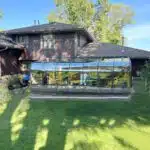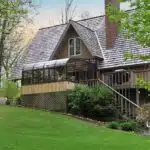Imagine biting into a ripe, juicy tomato straight from the vine in the middle of January. Or plucking fresh basil and lettuce to make a summery salad, even when it’s snowing outside. This year-round gardening dream can become reality with a residential greenhouse.
Adding a greenhouse structure to your home offers the chance to grow fruits, vegetables, flowers and herbs during every season. But it also requires a considerable investment and commitment. Here’s an in-depth guide to everything you need to know about owning a home greenhouse.
Reasons to Own a Greenhouse
Fresh Produce Year-Round – This is the #1 motivator for most home greenhouse owners. With proper temperature control and lighting, greenhouses allow you to grow produce, vines, and herbs regardless of external weather or season.
Wider Variety – A greenhouse opens up many more plant possibilities since you can manually control factors like temperature, light, humidity, and soil conditions. Grow exotic fruits, orchids, or other plants not possible outdoors in your climate.
Earlier Harvests – Get a head start on spring planting and enjoy earlier harvests of crops like tomatoes and peppers. Likewise, extend fall harvests later into the colder months.
Pest Protection – Enclosing plants prevents many insect and animal pests from reaching them. However, greenhouse owners still need to control common insects like aphids.
Allure and Ambiance – A greenhouse can beautify a home’s gardens and architecture with graceful design and flourishing greenery visible from within the home.
sun exposure, ideally with some shade from intense mid-day sun. Check for tree shade patterns throughout the day.
Features – Consider creature comforts like benches, shelves, sinks, electrical outlets, and automated watering or ventilation systems.
Getting Your Greenhouse Up and Running
Permits – Depending on size, electricity, and features, you may need permits for construction, plumbing, or electrical. Be sure to follow any zoning regulations.
Foundation – This provides critical stability, with options like poured concrete, compacted gravel, pressure-treated wood, cinder blocks, or posts.
Utilities – Electricity can power systems like exhaust fans, heaters, and grow lights. Some greenhouses also incorporate plumbing for plant hydration and sinks.
Accessories – Use shelving, hooks, benches, and sufficient pots and containers to make the most of your greenhouse space. Install shade cloths as needed.
Soil and beds – Raised beds with rich soil help plants thrive. You may be able to improve native soil or bring in premium blended topsoil.
Seeds and starters – A greenhouse lets you germinate seeds indoors on heat mats before transplanting outdoors per planting instructions.
Maintenance
Your greenhouse will require regular upkeep and chores:
- Watering and feeding plants
- Grooming, staking, pruning
- Venting heat and humidity
- Controlling pests like aphids without chemicals
- Repairing any material damage
- Monitoring soil health and nutrients
- Planning for any vacation coverage
While owning a greenhouse does demand an investment of time, effort and money, many gardeners find the benefits well worth it. The chance to grow special plants in ideal conditions, the ambiance, and the availability of fresh-picked produce make a home greenhouse a cherished addition.
Related Posts
We Like to Hear From You!
We service and support the products we manufacture and install. If you need assistance with
our products or those of another sunroom manufacturer, contact us!





